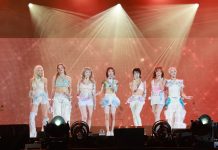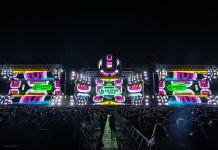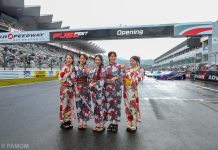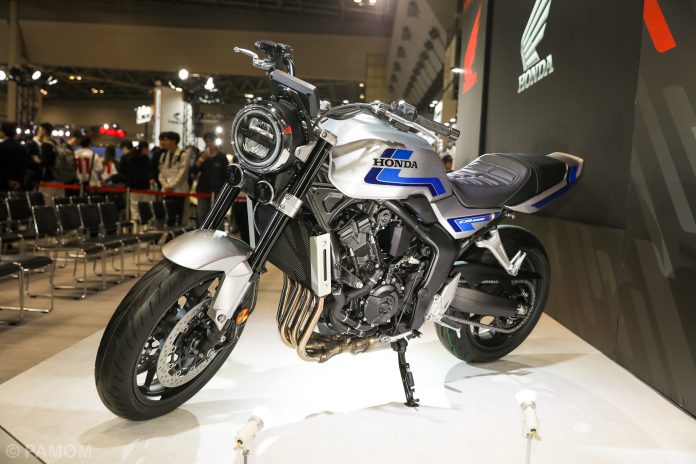Tokyo welcomed a surge of high-octane energy as the 52nd Tokyo Motorcycle Show opened on March 28, 2025, at Tokyo Big Sight. Drawing more than 118,800 visitors over its three-day run, the event saw a 4.3 percent increase in attendance compared to the previous year, confirming its continued status as Japan’s premier motorcycle exhibition. Organized under the theme “Motorcycles: Beyond Imagination”, the show successfully blended cutting-edge mobility with lifestyle culture and fan engagement, while showcasing the rapidly evolving future of two-wheel transportation.
The exhibition occupied a large footprint across East Halls 1, 2, 3, and 8, with 180 exhibitors filling over 1,070 booth spaces, representing a wide range of manufacturers, parts suppliers, apparel brands, and custom builders. A total of 580 motorcycles were on display, from concept machines and prototype models to the latest commercial releases. This year’s show saw an expanded focus on electric mobility, hybrid innovation, and smart safety technologies, reflecting both domestic and global industry shifts.
Honda generated widespread buzz by unveiling two future-oriented concepts: the CB1000F Concept, a neo-retro naked sportbike based on the CBR1000RR platform, and a mysterious V‑Type Turbo Engine model, which hinted at a possible new era of forced induction for high-performance motorcycles. Both drew long queues of spectators eager to get a closer look at the manufacturer’s vision for the next generation of street machines.
Yamaha took a multifaceted approach, combining product showcases with lifestyle experiences. The company presented three highly anticipated models: the YZF‑R9, a middleweight supersport that bridges the gap between the R7 and R1; the Tracer 9 GT+ Y‑AMT, offering electronically controlled semi-automatic transmission and adaptive cruise control; and the updated XSR900, a classic-inspired model featuring cutting-edge electronics. Yamaha’s booth also emphasized the brand’s culture, with the “Let’s Play with Yamaha” corner offering hands-on activities, photo booths, and live demonstrations that appealed to both seasoned riders and families.
Kawasaki focused on premium performance and touring capability. The new Ninja 1100SX SE, an upgraded sport-touring flagship, was on display with redesigned fairings, radar-assisted adaptive cruise, and updated instrumentation. The Z900 SE also drew attention with its Öhlins rear suspension, Brembo brakes, and unique colorways, offering a balance of aggressive street style and refined components. Meanwhile, Suzuki highlighted its urban and off-road versatility, introducing the e‑PO, a compact, foldable electric scooter designed for last-mile mobility, and two prototypes—the DR‑Z4S and DR‑Z4SM—which offered modern updates to the company’s legacy of dual-sport machines.
Beyond the major manufacturers, the show was also a celebration of Japanese craftsmanship and niche innovation. Motowaki Engineering recreated its iconic “Foresight” exhaust system in a heritage-themed display that blended nostalgia with engineering excellence. In the luxury sector, BMW Motorrad used the event to debut its R20 Concept, a muscular naked roadster equipped with a next-generation boxer engine, and the F450 GS Concept, aimed at new riders looking for lightweight adventure machines. Other international brands such as Harley-Davidson, KTM, Triumph, and Royal Enfield also had a strong presence, each showcasing models tailored for the Japanese and Asia-Pacific markets.
Interactive experiences played a central role in this year’s programming. East Hall 8 served as the event’s stage zone, hosting talk shows with championship riders, Q&A sessions with engineers, and real-time motorsport commentary. The “Trial Show” thrilled audiences with gravity-defying stunt riding, while the Tokyo Metropolitan Police held public demonstrations using white motorcycles to promote safe riding practices. Rider gear demos, helmet testing zones, and augmented reality simulators also added layers of engagement for attendees of all ages.
The show catered not just to hardcore enthusiasts but also to casual fans and new riders. Organizations like Moto Connect and Moto-Ō created accessible walkthroughs and beginner-friendly content, making the event more inclusive than ever. Moto-Ō’s booth allowed visitors to try out common maintenance tasks like chain oiling and air filter replacement under the guidance of trained mechanics, offering a practical, educational angle often missing at large-scale expos. Meanwhile, Moto Connect’s digital coverage helped break down barriers for women riders and first-time attendees with approachable interviews and recap content.
Pop culture and cosplay also had a role to play, adding a layer of entertainment. The GSX‑8R Tuned by JURI, inspired by Capcom’s Street Fighter game series, stood out as a unique fusion of gaming and automotive design. Show attendees could pose with the bike and take commemorative photos in a booth styled to resemble a game stage. Elsewhere, limited-edition merchandise from brands like SHOEI, Arai, and RS Taichi sold out quickly, underscoring the growing convergence of moto fashion and streetwear.
Across the board, the 2025 Tokyo Motorcycle Show felt more immersive, more inclusive, and more forward-looking than in previous years. It succeeded not only as an industry platform but as a cultural touchpoint—bringing together riders, creators, engineers, influencers, and newcomers in one space. With a focus on smart mobility, gender diversity, and hands-on engagement, the show underscored Japan’s central role in shaping the future of motorcycle culture worldwide.
Event Information:
Tokyo Motorcycle Show 2025
March 28–30, 2025
Tokyo Big Sight (East Halls 1, 2, 3, 8)
Official website: https://www.japan-motorcycleshow.jp
Additional info: https://www.japanistry.com/event/tokyo-motorcycle-show
To view more images, please visit:


















